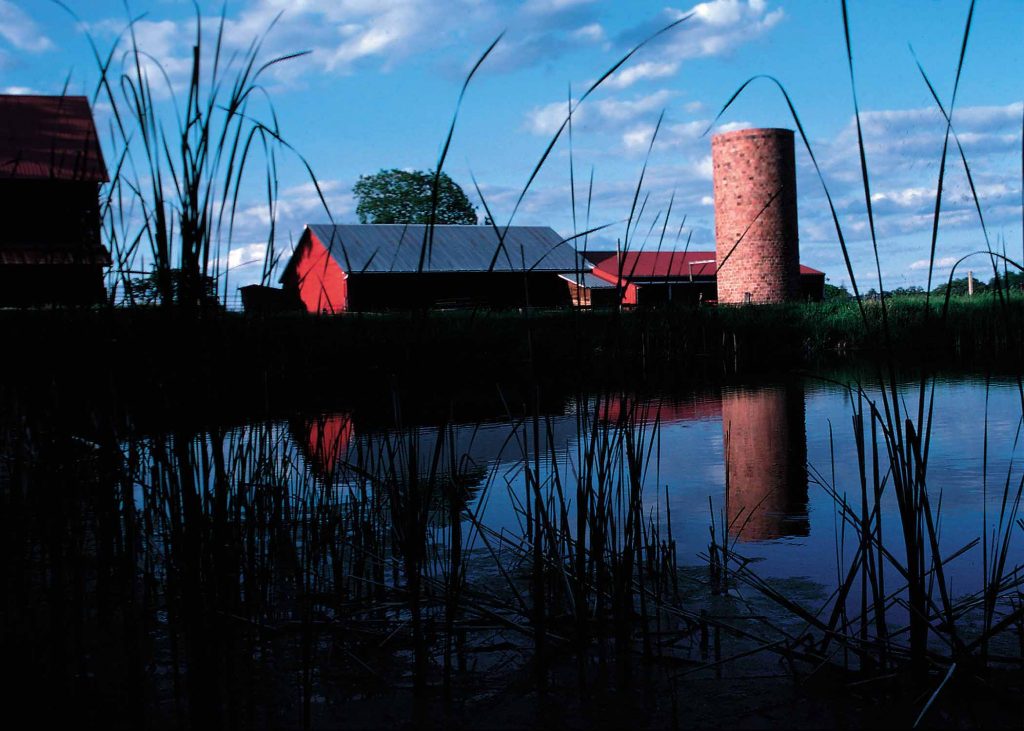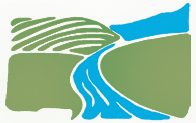
Farm pond on Dick Schild farm in Benton County, Iowa improves water quality downstream as well as provides recreation on the farm. Photo courtesy USDA
Small farm ponds are man made and not natural environments. They must be carefully managed to provide productive, recreational fishing. Think of a pond as a garden or an orchard. It must be properly laid out, fertilized, seeded (stocked), weeded, pruned (selectively harvested), and protected from acts of nature (e.g., oxygen depletions) to be bountiful.
Good pond management includes:
enhancing food availability for fish,
controlled harvesting to maintain the balance of predator and prey populations,
controlling weeds, and
preventing situations that may cause fish kills.
These are not simple tasks. Ponds are complex ecological systems and require personal commitment and insight for productive management.
No two ponds are exactly alike. Ponds close to one another, but on the same watershed (surrounding area from which the pond receives rainfall or water drainage), will be slightly different. These differences are not well understood. However, we do know that soil characteristics and localized variations in the watershed are unique for each pond. Factors critical to managing a pond include:
plankton,
fish populations,
and water quality.
Plankton, the microscopic and near-microscopic organisms that are suspended in the water of a pond, are important because they are essential to the creation of oxygen in a pond. Fish need oxygen to survive, and oxygen is not freely available in pond water. It must dissolve into the water before it becomes available to the fish. Dissolved oxygen comes from the air or through the process of photosynthesis. Aquatic plants, primarily phytoplankton and other algae, release oxygen directly into the water as a by-product of photosynthesis, the most important source of oxygen in water.
Plankton are classified as phytoplankton (plants) and zooplankton (animals). All phytoplankton are algae; however, not all algae are phytoplankton. Both phytoplankton and zooplankton are important in fish pond management.
Phytoplankton, at the bottom of the aquatic food chain, are eaten by zooplankton and insects. Small fish eat the zooplankton and insects. Small fish are food for larger fish (the ones you are trying to catch). An adequate phytoplankton population is essential for producing a large and healthy fish community.
The color or clarity of pond water can be related to plankton populations or to suspended sediments and organic matter. Productive water (water that will support healthy fish populations) has a green tint that is produced by chlorophyll pigments contained in the billions of phytoplankton suspended in the water. A large population of phytoplankton is called a bloom. These blooms can die off or “crash” rapidly. This causes the water to appear dark or black. When this happens, the dead phytoplankton begin decaying. This process uses oxygen and may reduce oxygen to levels at which fish are stressed or die. Phytoplankton die offs are common in deep hillside ponds or ponds where manure or fertilizer from the watershed drains into the pond.
Sediments (silt, sand, or dirt) washed into ponds after heavy rains can also change pond color. Normal color should return within a few days as the particles settle. Ponds that receive too much sediment can become unproductive. This situation can cause fish to die because plants become shaded (reducing the amount of sunlight available for photosynthesis and oxygen production). Also, fish gills can become clogged with the sediment particles, making it difficult for fish to breathe.
Credits: Clemson CCE
